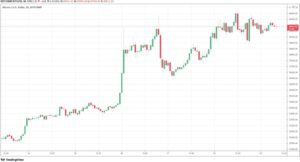
As we round out 2021, it can seem tired and pointless to rehash the last two years and all the ways that a global pandemic has reshaped our lives. We just want to move on, and an end to this phase does seem to be slowly creeping into sight. But for many businesses, supply chain issues may very well put a damper on these hopes.
While it’s nice to dream of a world back to its old self, the hard reality is that businesses, consumers, and the services that connect them will be feeling the echoes of this strange period for some time. A number of factors, the pandemic at the root of them all, have led to major shortages in products and labor alike, as well as supply chain delays unlike any we’ve seen in recent memory. It’s unlikely that these effects will ever be more apparent than during this year’s holiday season.
Supply Chain Issues and the Questions They Raise
Between everything we pay for— food and fashion, gifts and gatherings, airfare and accommodations—Q4 has always been a critical time for the businesses that power our economy. Whether you’re in manufacturing or retail, making and selling the products people love, or in shipping and logistics, delivering these items to eager consumers, you’re staring down many challenges and more questions than answers.
Will you be able to get enough inventory to satisfy demand? Can you count on delivery services to operate on time? Will the product you purchase hit your shelves before the holiday rush? Finally, where will you turn if they ultimately don’t? There are solutions that can give your business some relief in this tough period. Still, understanding the reasons and risks behind it all is key.
Read on to learn more about the logistical and supply chain issues that the world is facing, why these issues are playing out and how your company can ultimately recover from these expected delays.
Unpacking the Labor Shortage
The pandemic has people all over the world rethinking their job prospects. Whether underpaid, overworked, or simply chasing new opportunities that have emerged from an economy in flux, workers have not been shy about leaving their jobs. In August 2021 alone, 3.4 million Americans quit—the most since the US Department of Labor started keeping count in 2000. As workers gain leverage, many a business has found itself in a tight spot.
While some workers feel under-appreciated and are holding out for something better, there are other perspectives. Many struggled with the burdens of childcare while schools went remote and have taken to full-time parenting. Some older workers simply took the changes brought on by the pandemic as an opportunity to retire early.
All of these factors have spelled trouble for a key part of our economy—truckers and warehouse workers.
Driving the Economy: Truckers Wanted
Over $10 trillion worth of the US economy’s goods are moved by truck alone. That’s 71% of total value of goods shipped, so chances are good that everything you’re touching right now spent at least part of its journey to you on a truck. The importance of this industry to us all can’t be overstated.
But heading into the holiday season, the American Trucking Association reports the industry will be missing about 80,000 drivers. Other experts elaborate, blaming what they say isn’t a true trucker “shortage” on low wages, bad driver retention rates, and poor prospects for entry-level drivers.
Whatever the case may be, the result is the same—not enough drivers. And the problem goes deeper still.
Warehousing Woes
Unsurprisingly, the industries most affected by this exodus include restaurants and hotels. But less expected is the hit that factories and warehouses have taken.
The pandemic caused an acceleration in the worldwide shift to e-Commerce. This resulted in an increase in “pick and pack” work—people retrieving items from bins and shelves, and preparing them for direct-to-consumer shipping. This model is far more labor-intensive than simply moving goods to brick and mortar stores by the pallet.
Over the summer, the warehouse and transportation industry had nearly 500,000 job openings. This is expected to worsen in the coming months, as shipping giants rely heavily on seasonal help that will likely not be available this year.
While these are problems for policymakers and employers to address, a portion of the supply chain issues emerge from overseas.
Supply Shortages from Abroad
Domestic matters aside, production of specialized goods from abroad—namely semiconductors and microchips—has slowed to a trickle. The initial wave of the pandemic surely disrupted fabrication of these high-tech components, and this stoppage has persisted. Tech-producing nations of East Asia have closed factories, and are still at less-than-full capacity.
Further, experts suggest that the customers buying these chips reduced their orders early in the pandemic, expecting an economic slump and decreased demand for electronics. As we began to recover, however, demand surged hard. Buyers are suddenly clamoring for more of the tech that powers both our day-to-day lives and the new work-from-home movement.
The little that is produced for export then faces yet another hurdle: shipping delays.
Problems with Port Congestion
Warehousing, trucking and production capacity is no help to companies if their products and components from abroad aren’t arriving on time. Goods shipped from across the water come mostly in containers on large ocean liners. They enter a country through one or more major ports which are responsible for unloading, inspecting, and tracking them. Recently, this step has proven to be yet another chokepoint.
Of the 22 most important shipping destinations in the world, those at Los Angeles and Long Beach have experienced the biggest uptick in port delays. 2021 has seen the time to receive and move out a shipping container jump from 3.6 days to 6.4 days. The US government is exploring 24/7 operations to pick up the pace.
Despite this, experts are managing expectations. With slowdowns at every stage of the supply chain, eliminating just one of many bottlenecks can only help so much.
What Supply Chain Issues Mean for Holiday Business
What does all this mean for your business this holiday season? With consumers being instructed to begin shopping as soon as possible, retailers and their suppliers will be under more pressure for an even longer season than usual.
Retailers certainly don’t want to lose revenue because they couldn’t get their hands on merchandise, but there’s another layer of trouble to this backup. What will they do when the inventory finally does arrive?
With a glut of late merchandise and holiday demand rapidly falling as December passes, businesses will find themselves with an unfortunate excess of hard-to-move seasonal stock. Add to this the inevitable wave of post-holiday returns and exchanges, and the next few months are a real threat to retailers’ ledgers and storage capacity.
There are a number of practices that businesses can use to mitigate these challenges, including improving their inventory tracking systems and seeking out partners to help manage returns. These solutions require significant investment and plenty of time to implement, however. These steps are certainly not realistic as we enter the busiest time of the year.
Some may try to warehouse inventory for next season if possible. Some will liquidate it for next to nothing. Even worse, some will even send goods to landfill. Businesses need a way to move excess and make room for new inventory while recovering the most value possible.
Tap Into the Secondary Market with B-Stock
The answer lies in the secondary market, countless entrepreneurs and small businesses who thrive on buying and reselling excess inventory.
For the past year, these operations have been hungrily watching this global logistics logjam. They know that retailers will soon be looking to offload the stock they can’t move themselves. Demand is high and savvy leaders can see that resellers are already on the move. What your business will need is a way to tap into that demand directly. Enter B-Stock.
B-Stock provides retailers with private online marketplaces where they can sell their inventory to hundreds of thousands of vetted buyers. As opposed to traditional liquidators who buy and sell your excess stock for profit, B-Stock uses an auction format to fetch the highest price the market will supply—often bringing in 30% or more compared to traditional liquidation methods. With fast time-to-cash and a high degree of brand control, this solution is the perfect fallback.
The logistics and supply chain issues of 2021 aren’t going to be easy on your business this holiday season. But with B-Stock, small retailers and enterprises alike can ease the stresses of overstock and returns and get on track for a safe and successful 2022.
Source: https://bstock.com/blog/holiday-supply-chain-issues/
- 000
- 2021
- All
- Americans
- asia
- Auction
- AUGUST
- Backup
- Biggest
- Brick and Mortar
- business
- businesses
- buy
- Buying
- Capacity
- caused
- Census
- chances
- Chips
- closed
- coming
- Companies
- company
- Consumers
- Container
- Containers
- Customers
- delays
- delivering
- delivery
- Delivery Services
- Demand
- Department of Labor
- driver
- e-commerce
- Early
- Economic
- economy
- Electronics
- employers
- entrepreneurs
- Exchanges
- Exodus
- experts
- export
- faces
- facing
- Fashion
- FAST
- Finally
- food
- Forbes
- format
- gifts
- Global
- global pandemic
- good
- goods
- Government
- High
- hotels
- How
- How To
- HTTPS
- Hundreds
- Including
- Increase
- industries
- industry
- inventory
- investment
- issues
- IT
- Job
- Jobs
- jump
- keeping
- Key
- labor
- large
- LEARN
- Led
- Leverage
- Liquidation
- logistics
- Long
- Los Angeles
- love
- major
- Making
- manufacturing
- Market
- marketplace
- Matters
- million
- model
- months
- move
- ocean
- online
- Operations
- opportunities
- Opportunity
- orders
- Other
- pandemic
- Parenting
- partners
- Pay
- People
- perspectives
- Plenty
- poor
- ports
- power
- pressure
- price
- Produced
- Product
- Production
- Products
- Profit
- purchase
- Rates
- Reality
- reasons
- Recover
- Restaurants
- retail
- retailers
- returns
- revenue
- rush
- safe
- savvy
- Schools
- secondary
- seeking
- sell
- Semiconductors
- Services
- shift
- Shipping
- Shopping
- shortages
- small
- small businesses
- So
- Solutions
- Spot
- Stage
- started
- stock
- storage
- stores
- Storm
- successful
- summer
- suppliers
- supply
- supply chain
- Systems
- Tap
- tech
- the world
- time
- track
- Tracking
- transportation
- truck
- Trucking
- us
- us government
- value
- Warehouse
- Water
- Wave
- WHO
- workers
- world
- worldwide
- worth
- year
- years



